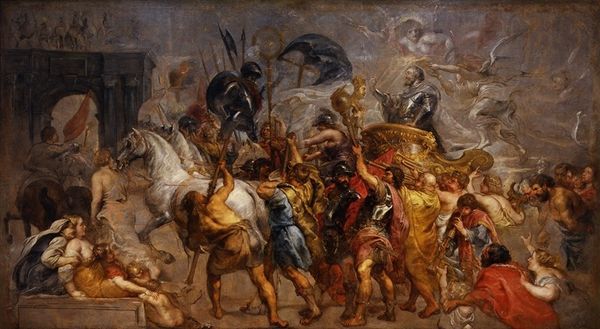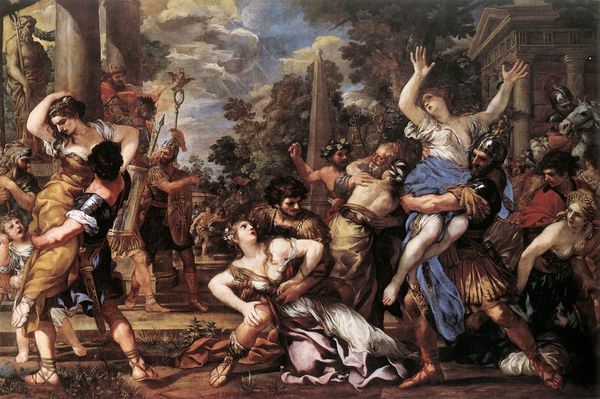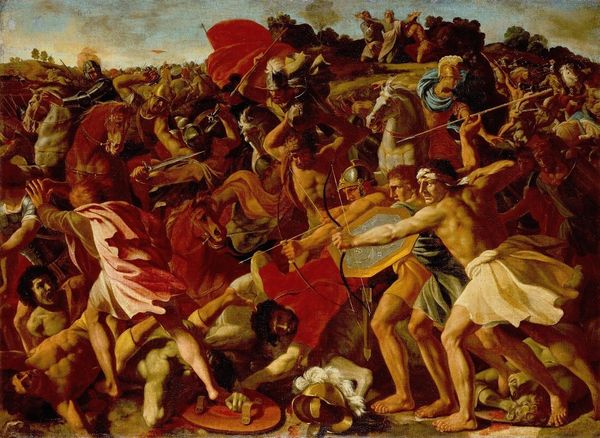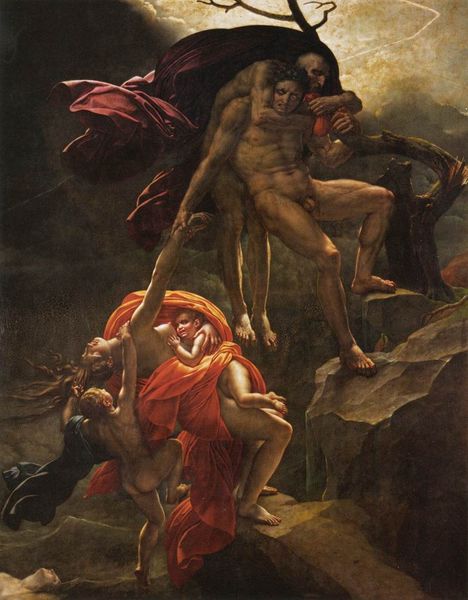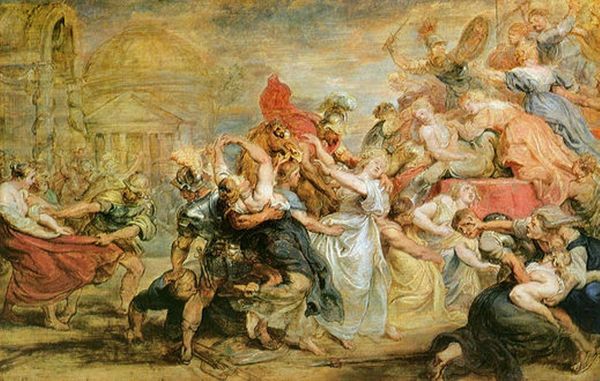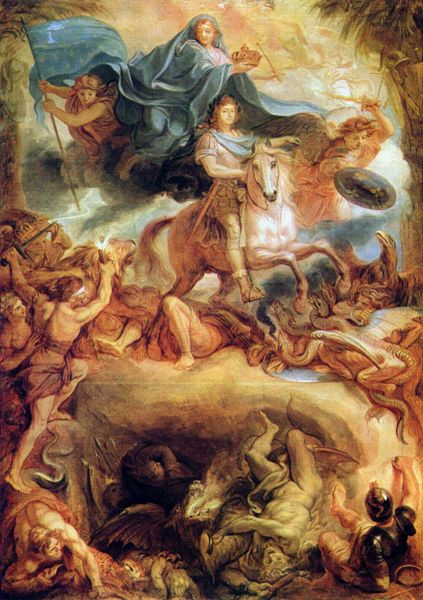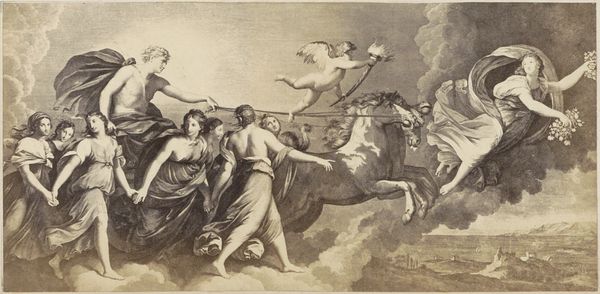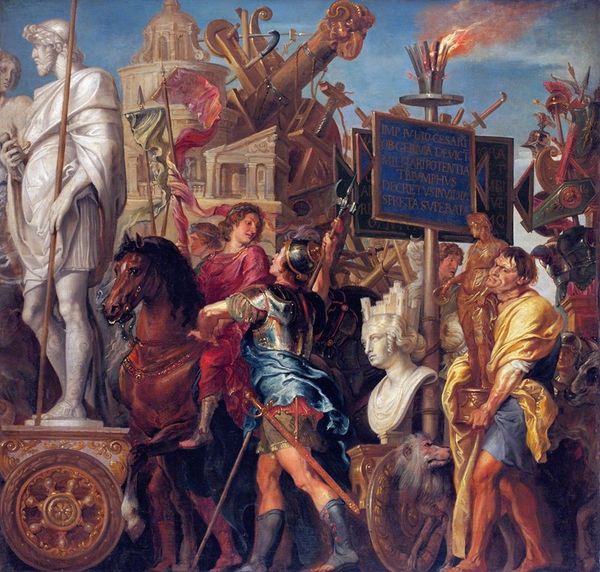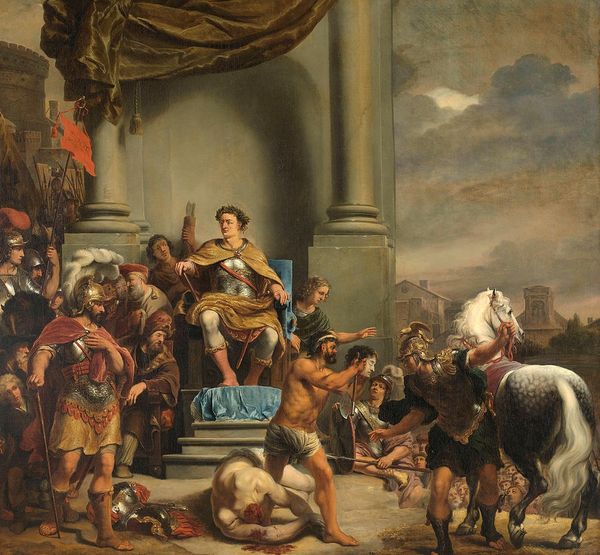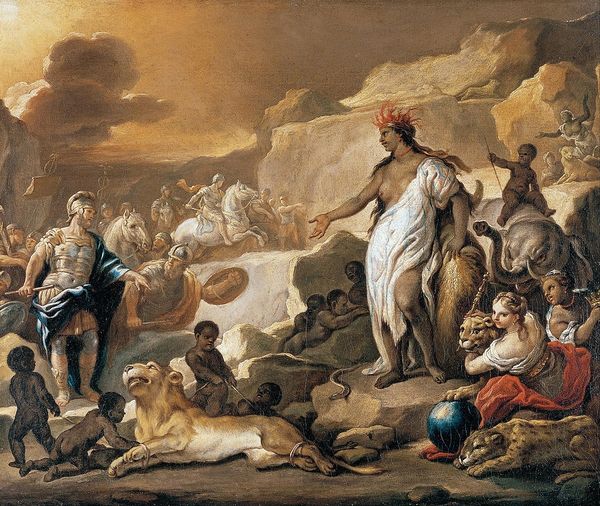
Copyright: Public domain
Editor: So, here we have Théodore Chassériau’s “Macbeth followed by Banquo meets the three witches on the Moor," painted in 1855, using oil on canvas. The mood is decidedly ominous. What strikes me is how the artist captured this palpable tension between the figures, the sky. How do you interpret this work, especially its connection to societal concerns of the time? Curator: That's a keen observation. Chassériau, though rooted in Romanticism, provides an interesting lens into the mid-19th century’s anxieties. Look at the stark contrast between the regal, armored figures of Macbeth and Banquo and the almost feral depiction of the witches. What could that opposition signify, in terms of the established order versus marginalized knowledge or power? Editor: It's like a clash between masculine power and feminine mysticism, maybe? The witches seem to represent a threat to the natural order and patriarchy. Curator: Precisely! And the setting, a desolate moor, further amplifies this sense of societal unease, as an ambiguous space, seemingly beyond the reach of civilization and its structures. It raises questions about whose stories are being told and whose are being suppressed. How do you think Shakespeare's Macbeth, as a narrative, speaks to that tension? Editor: Macbeth’s ambition and moral decay, fueled by the witches' prophecies, serves as a warning, doesn't it? It suggests the dangers lurking when ambition eclipses ethical considerations and a just social structure. Curator: Absolutely. Chassériau captures not just a scene from a play but also reflects, subtly, on the fragility of societal norms and the potential for disruption when marginalized voices, represented by those witches, begin to challenge established power. This painting urges us to ask critical questions about power dynamics within the narrative, which resonate even today. Editor: I hadn’t thought of it that way, but seeing it through that intersectional lens really makes me reconsider the painting's message. Thank you! Curator: My pleasure. It's through these dialogues that we unearth new understandings and appreciate art's enduring ability to comment on our world.
Comments
No comments
Be the first to comment and join the conversation on the ultimate creative platform.
